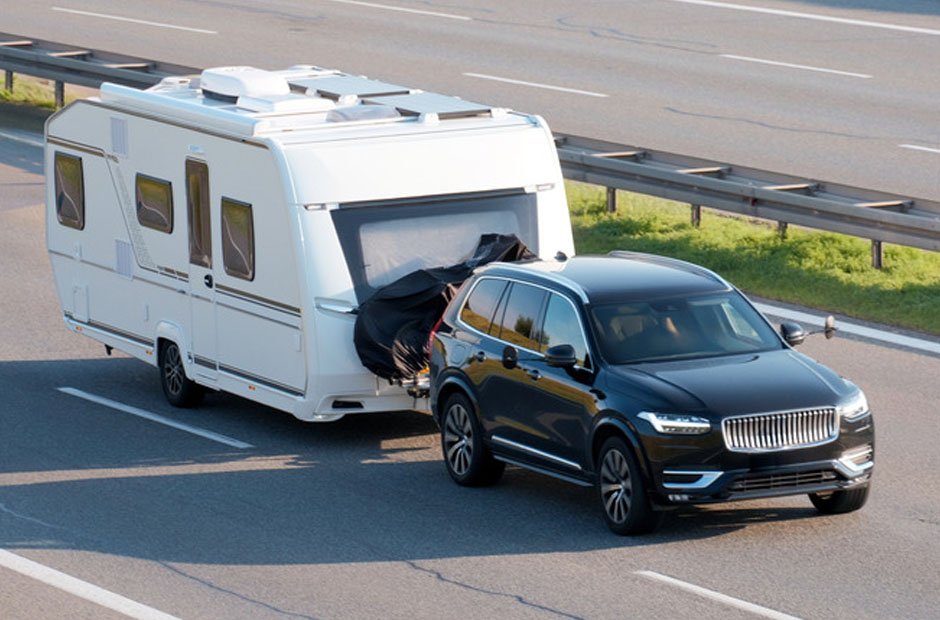Key Takeaways
- Understand your vehicle’s towing capacity to prevent overloading.
- Ensure a secure hitch connection to maintain trailer stability.
- Distribute weight evenly to avoid trailer sway.
- Conduct thorough pre-trip inspections to identify potential issues.
- Adapt driving techniques to accommodate the added weight and length.
Safe trailer loading and towing is critical in modern transport, whether hauling personal cargo, work equipment, or recreational vehicles. Adhering to safety best practices helps avoid costly damage, prevents accidents, and protects all road users. Access to specialized material handling trailers can further enhance both efficiency and safety, making sure your load is secured and transported with the right equipment for the job. Understanding essential safety concepts—from hitching to emergency preparedness—forms the foundation for confident and responsible trailer operation. Take the time to master these skills to ensure your towing experience remains incident-free.
Understanding Your Vehicle’s Towing Capacity
Before connecting any trailer, it’s essential to know your vehicle’s maximum towing capacity. Exceeding this specified weight can overtax the engine, brakes, and suspension system, raising the risk of breakdowns and loss of control. The owner’s manual provides these specifications, detailing permissible gross trailer weight and recommended tongue weight. Sticking within these limits ensures that mechanical failures are minimized and performance stays reliable, especially during long hauls or on steep grades. Overloading is a leading cause of trailer-related accidents, making this step non-negotiable.
Ensuring a Secure Hitch Connection
The hitch is the literal connection between your vehicle and the trailer, and its secure attachment is critical. Always use a hitch rated for your load’s weight, and follow the manufacturer’s installation instructions. After lowering the coupler onto the ball mount, engage the locking lever or pin to prevent detachment. Safety chains should be crossed under the trailer tongue to catch the trailer if the hitch fails. Double-check wiring connections and ensure that trailer lights and signals are synchronized with your vehicle for clear communication with other drivers.
Proper Weight Distribution
Correct weight distribution inside the trailer helps maintain stability and control. The recommended load arrangement places about 60% of the cargo weight toward the front near the hitch, and 40% toward the rear. This configuration pushes sufficient downward force onto the hitch, improving traction and reducing sway. Incorrectly balanced loads can cause hazardous “fish-tailing” at highway speeds, making the vehicle difficult to steer safely. Secure every item with tie-downs or straps to prevent shifting during transit, thus maintaining balance throughout the journey.
Conducting Pre-Trip Inspections
Before departure, inspect the trailer and the towing vehicle thoroughly. Key items to check include tire pressure and tread, as under-inflated or damaged tires can lead to blowouts. Verify that all lights—taillights, brake lights, and turn signals—are operational. Confirm that the trailer brakes, if equipped, are functioning correctly. Examine the hitch, safety chains, and electrical connectors for signs of wear or loose connections. A final walk-around helps identify any unsecured cargo or protruding objects that could become hazards on the road.
Adapting Driving Techniques
Towing a trailer alters your vehicle’s dynamics. The combined weight increases momentum, requiring longer distances to achieve safe stops. To counter these differences:
- Drive at reduced speeds, especially on curves or in congested areas.
- Extend your following distance to allow extra braking space.
- Take turns wider and slower, ensuring the trailer wheels clear curbs or obstacles.
- Use mirrors to monitor the trailer’s position and keep constant track of surrounding vehicles.
Mastering these adjustments prevents jackknifing on turns or losing control in an emergency.
Handling Adverse Weather Conditions
Weather can introduce added risks when towing. Rain, snow, and wind affect traction and trailer stability. Practice caution by:
- Lowering speed to maintain tire grip on slippery surfaces.
- Increasing following distance to avoid rear-end collisions, as stopping distances can double in inclement conditions.
- Watching for gusting winds that may push your trailer, compensating with smooth and steady steering inputs.
If conditions are too severe, postponing your trip and waiting for better weather is generally safer.
Emergency Preparedness
Always set out on a towing trip prepared for emergencies. Store a roadside kit containing basic tools, tire-changing equipment, reflective triangles, a flashlight, extra fuses, and a fire extinguisher. Should mechanical trouble develop, pull your vehicle and trailer completely off the road before attempting any repairs to reduce your exposure to fast-moving traffic. Emergency readiness helps reduce potential stress and danger during an unexpected event. Safe trailer loading and towing demands diligence, awareness, and adherence to proven safety principles. By following these best practices, you protect your load, your equipment, and, most importantly, the well-being of everyone sharing the road.



